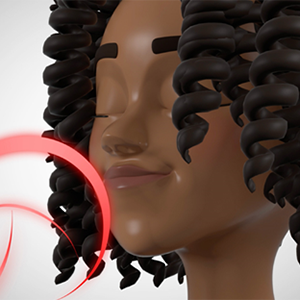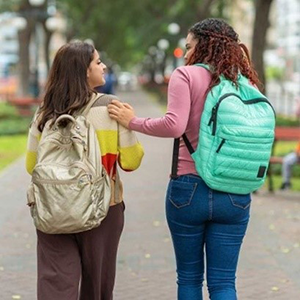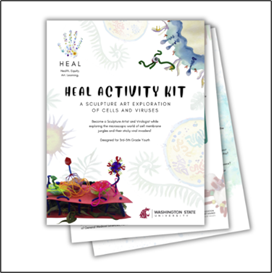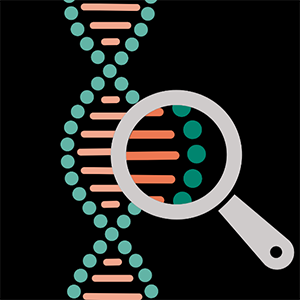
Biomedical Beat Educator's Corner: Genetics Miniseries
This Biomedical Beat miniseries explores the field of genetics—from how people inherit genes to how researchers study them. Students learn about different parts of genetics by reading the blog posts and discussing, applying, and quizzing what they learn through the activities outlined in the Educator’s Corner.
Grades: High school
Produced by: National Institute of General Medical Sciences

Biomedical Engineering Adapted for Middle Schoolers (BEAMS) Lesson Plans
These lesson plans for middle school provide students with hands-on activities that focus on biomedical engineering approaches to address health care problems. Lesson topics include nanoparticles for drug delivery, DNA and gene editing, surgical robots, and biomaterials.
Grades: 6-8
Produced by: National Institute of Biomedical Imaging and Bioengineering
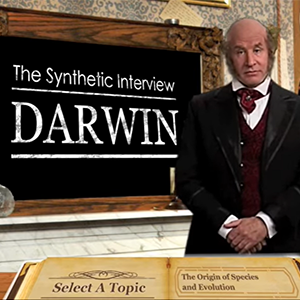
Charles Darwin Synthetic Review
In this free interactive experience, students learn about Charles Darwin, the naturalist, geologist, and leading contributor to the fundamental principles of evolution. Students select from a list of questions to ask a virtual Darwin and receive insight into various topics.
See other evolution curriculum from The Partnership in Education.
Grades: Middle school through grade 9
Produced by: The Partnership in Education, Duquesne University (SEPA funded)
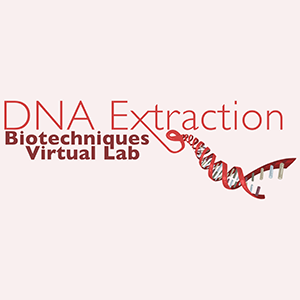
DNA Extraction
In this virtual laboratory from Learn.Genetics, students learn about some uses of DNA extraction. They also perform a cheek swab and extract DNA from human cells.
Grades: High school
Produced by: Genetic Science Learning Center, University of Utah (SEPA funded)

Genetics
This reading resource introduces the subject of genetics, including details about scientist Gregor Mendel’s work, an overview of DNA, videos on Punnett squares, and illustrative examples of pedigree charts.
Grades: High school
Produced by: The Partnership in Education, Duquesne University (SEPA funded)
Genome + Environment = Dance!
This video explains to students how "what makes you, you" is a combination of a person’s genome—DNA inherited from their ancestors—and their environment, including their town/city, relationships, and lifestyle choices. It highlights that while genetic code shapes certain aspects of identity, environmental factors and personal decisions play a significant role, emphasizing that "DNA is not destiny."
Grades: 6-12
Produced by: 42 Degrees North Media for the National Human Genome Research Institute

Genome: Unlocking Life's Code
This website focuses on genomics and its impact on people’s lives. It provides a resource library useful to students and educators containing lesson plans, interactives, animations, student-written articles, and more. This website was developed to support the Genome: Unlocking Life’s Code exhibition, a collaboration between the National Human Genome Research Institute and the Smithsonian National Museum of Natural History.
Grades: 9-12
Produced by: National Human Genome Research Institute
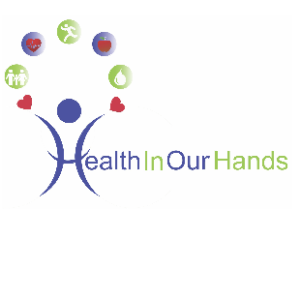
Health In Our Hands Curriculum
Health in Our Hands teaches students to investigate critical community health concerns and use real-world contexts to appreciate the importance of both genetic and environmental factors in their risk for disease. The middle school curriculum consists of two units that focus on gene-environment interactions and natural selection through two subjects: Type 2 diabetes and substance use disorder. The high school curriculum consists of two units that focus on concepts in molecular genetics, genomics, and evolution through exploring variation in monkeyflowers and in skin color, among other topics related to human health.
Grades: Middle and high school
Produced by: Create for STEM Institute at Michigan State University in collaboration with the Health in Our Hands-Flint/Genesee Partnership (SEPA funded)

Personal Genetics Education Project (pgED): Lesson Plans
pgEd provides interactive lessons for educators to engage students in discussions of ethics and personal genetics. Subjects include biology, health, social studies, physical education, and psychology. All lesson plans contain background reading for teachers and students; classroom activities; discussion points; in some cases, a slide presentation or video clip; and an evaluation. Lessons can stand alone or be taught as a unit.
Grades: High school
Produced by: Department of genetics, Harvard Medical School (SEPA funded)
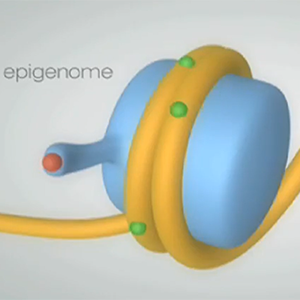
The Epigenome At a Glance
This brief video from Learn.Genetics introduces students to the epigenome and explains how it influences DNA.
Grades: High school
Produced by: Genetic Science Learning Center, University of Utah (SEPA funded)

The Partnership in Education: Materials and Resources
The Partnership in Education is a program that creates innovative, hands-on educational products that make science engaging and fun for teachers, students, and learners of all ages. Topics range from the scientific method and evolution to the science of sleep and regenerative medicine. Materials and resources include videos, games, student readings, and curriculum.
Grades: Elementary through high school
Produced by: Duquesne University (SEPA funded)
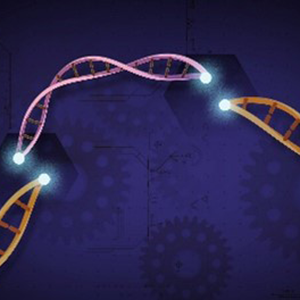
What Is CRISPR?
This Biomedical Beat blog post explores the fascinating gene-editing tool called CRISPR. It details how in the 1980s, researchers discovered odd, repeating sequences in the genomes of certain bacterial species, later named CRISPR sequences. Now, scientists use the CRISPR-Cas9 system in the laboratory to improve our understanding of human biology, and clinicians can use it to treat some diseases, like sickle cell disease. In addition to educational information, this post also provides access to a Kahoot! quiz, which tests students’ knowledge of this tool.
Grades: 9-12
Produced by: National Institute of General Medical Sciences
